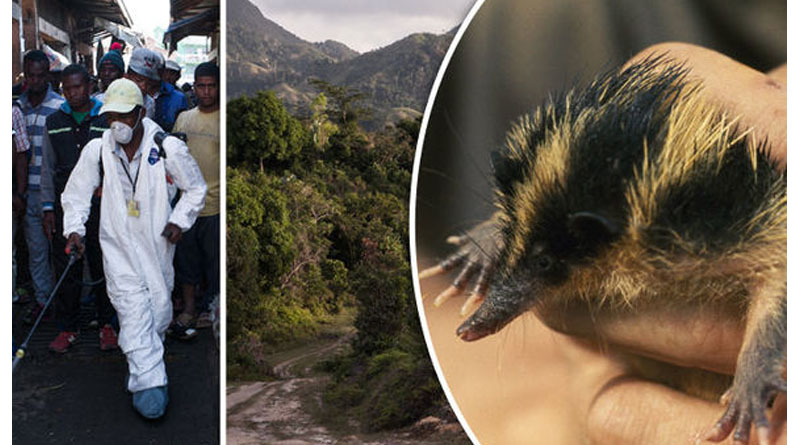Black Death plague: Where did it come from? Cute animal helps spread plague in Madagascar

THE PLAGUE in Madagascar spreads to rats in villages from wild forest animals such as the adorable highland streaked tenrec.
By Alice Foster
Fleas spread the bubonic plague from wild rodents in the forest to rats in the villages and then on to humans in the highlands of Madagascar.
The highland streaked tenrec is one of the forest animals that act as a reservoir for the plague on the diverse island off the coast of Africa.
The pathogen that spreads the plague was responsible for the Black Death, which killed tens of millions of people across Europe in the Medieval period.
More than 100 years ago, the plague was first introduced to Madagascar by infected rats coming off ships. But it has since spread to other rodents on the island.
Matthew Baylis, professor of veterinary epidemiology at Liverpool University’s Institute of Infection and Global Health, said that the plague remains endemic in Madagascar.
He said the plague circulates among wild animals, such as the highland streaked tenrec, in the forest. Fleas then spread the plague to rats in villages.
“It’s endemic in Madagascar and it’s been there for well over 100 years,” he said. “Every now and then, it spreads to the human population in the form of bubonic plague.
“But the bubonic plague can turn into pneumonic plague, in particular if people are not treated quickly. These people with pneumonic plague can spread it more quickly to other people.”
It is not known why the plague outbreak has been so bad this year, but Prof Baylis suggested that it could be linked to the El Niño in 2016.
He said: “We have suspicions – and it is no more than a suspicion – that it could be related to the El Niño we had a year ago.”
He said that changes in rainfall may have affected fleas and rats, stimulating the bubonic plague which has led into the pneumonic plague.
The World Health Organization (WHO) said the Madagascar’s Ministry of Health reported 1,231 cases and 124 deaths – mostly of pneumonic plague – between August 1 and October 25.
“The proportion of pneumonic plague – the form which can be transmitted from person to person – is much higher than in the past,” a WHO spokesperson told The Independent.
There is also a suggestion that a Madagascan ritual known as famadihana, which involves digging up the bones of dead relatives, could be linked to the spread of the plague.
Willy Randriamarotia, Madagascar’s health ministry chief of staff, said: “If a person dies of pneumonic plague and is then interred in a tomb that is subsequently opened for the ritual, the bacteria can still be transmitted and contaminate whoever handles the body.”
Médecins Sans Frontières (MSF) said: “Three types in the current outbreak in Madagascar: the bubonic, pneumonic and septicemic plague.
“What makes this outbreak exceptional is the wide occurrence of the most lethal form of plague, the pneumonic plague that is also the only form that spreads from human to human.”
(Source: Express.co.uk)



